Direct Vision in Massachusetts
Summer 2024
The Lab @ MassDOT
This work was done as part of a summer fellowship at The Lab @ MassDOT to support the work they are doing following the Commonwealth of Massachusetts Direct Vision Study.
Direct vision is what a driver can see with their own eyes, without the aid of mirrors, cameras, or sensors. What a driver can see with mirrors, cameras and sensors is referred to as indirect vision. The areas a driver cannot see are referred to as the blind zone. The reason for highlighting direct vision in particular is that drivers have faster reaction times and memory of things they see in their direct vision, rather than things that only appear in indirect vision. Indirect vision is also related to the blind zone in that the more blind zone you have, the more area you have to compensate for with indirect vision.
This work fits into the ‘safe vehicles’ component of the Safe System approach to roadway safety. While there are standards for what a driver should be able to see from their mirrors, there are currently no federal standards in the US set for what a driver should be able to see directly. What a driver can see while operating the vehicle is an important part of vehicle safety: people don’t have a chance to avoid what they can’t see. It’s extremely relevant for trucks and large fleet vehicles because due to their size, a crash in which a large vehicle is involved tends to result in serious or fatal injury. This work on direct vision aims to highlight the importance of visibility in making trucks safer vehicles, both for the operator and others who share the road.
My work this summer was aimed at developing ‘report cards’ for the 10 Massachusetts municipalities that allowed The Lab to measure their fleet vehicles for the study. These ‘report cards’ aimed to make direct vision in their fleet and the results of the study understandable, useful, and actionable, and were unique for each fleet. A sample report card for the city of Cambridge is displayed below, and the full pdf can be found here.
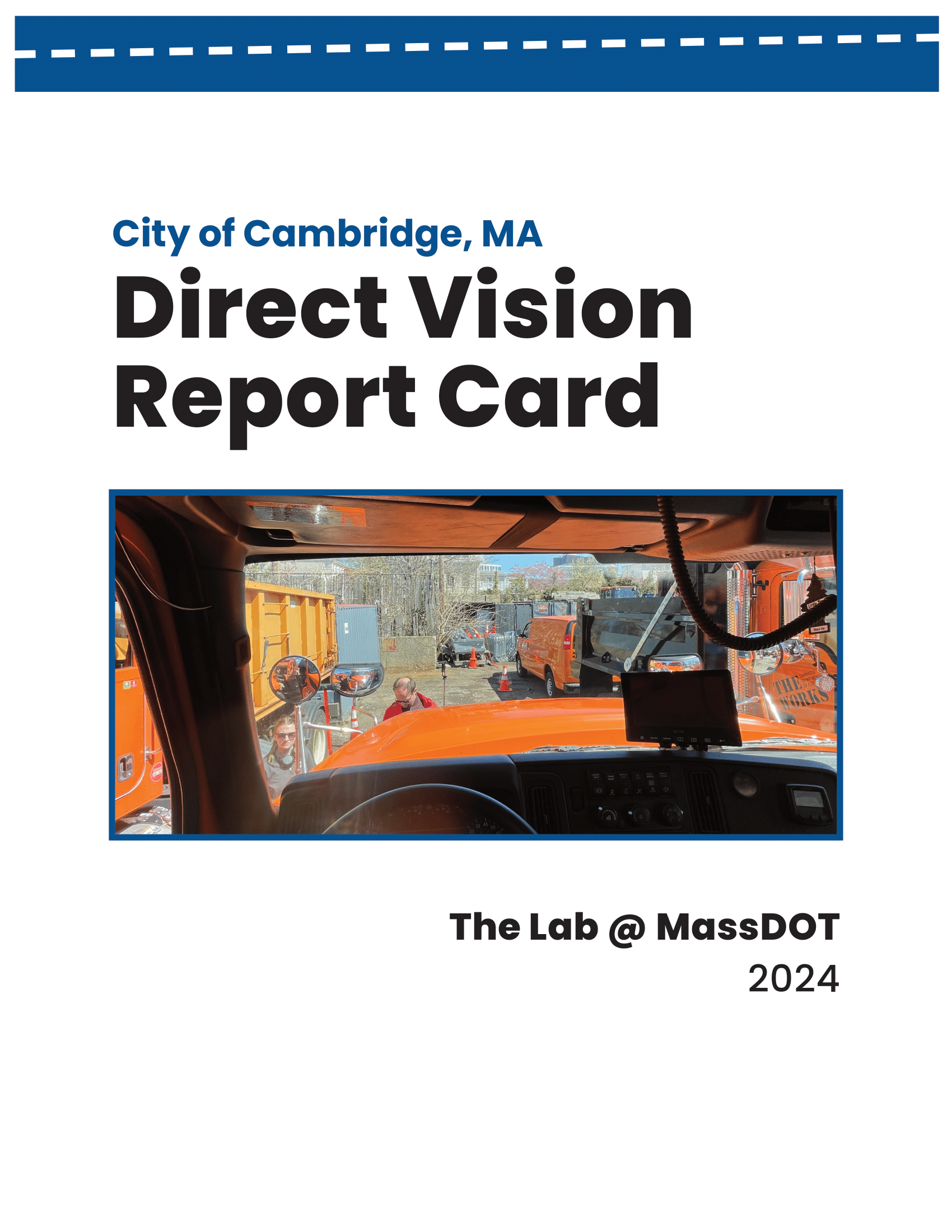
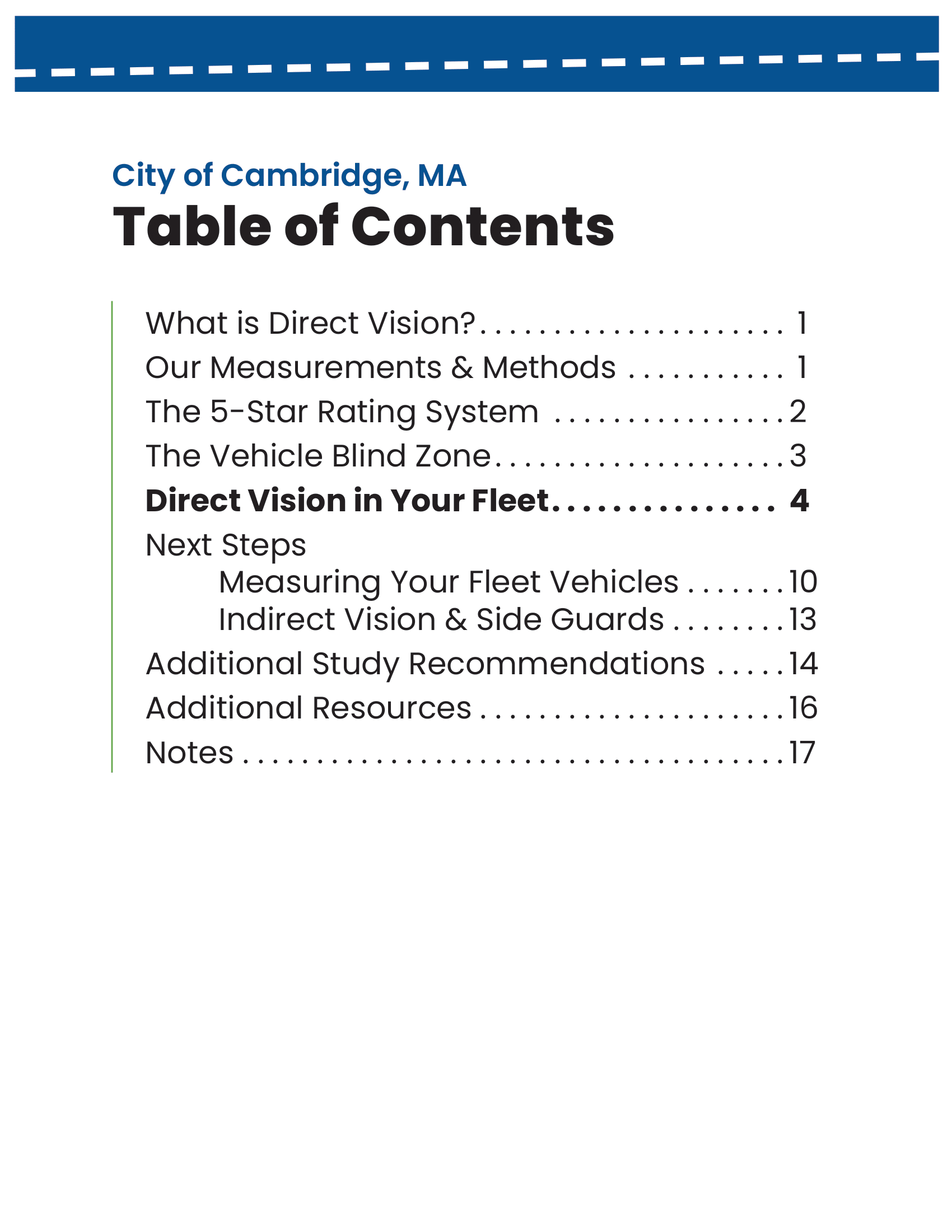
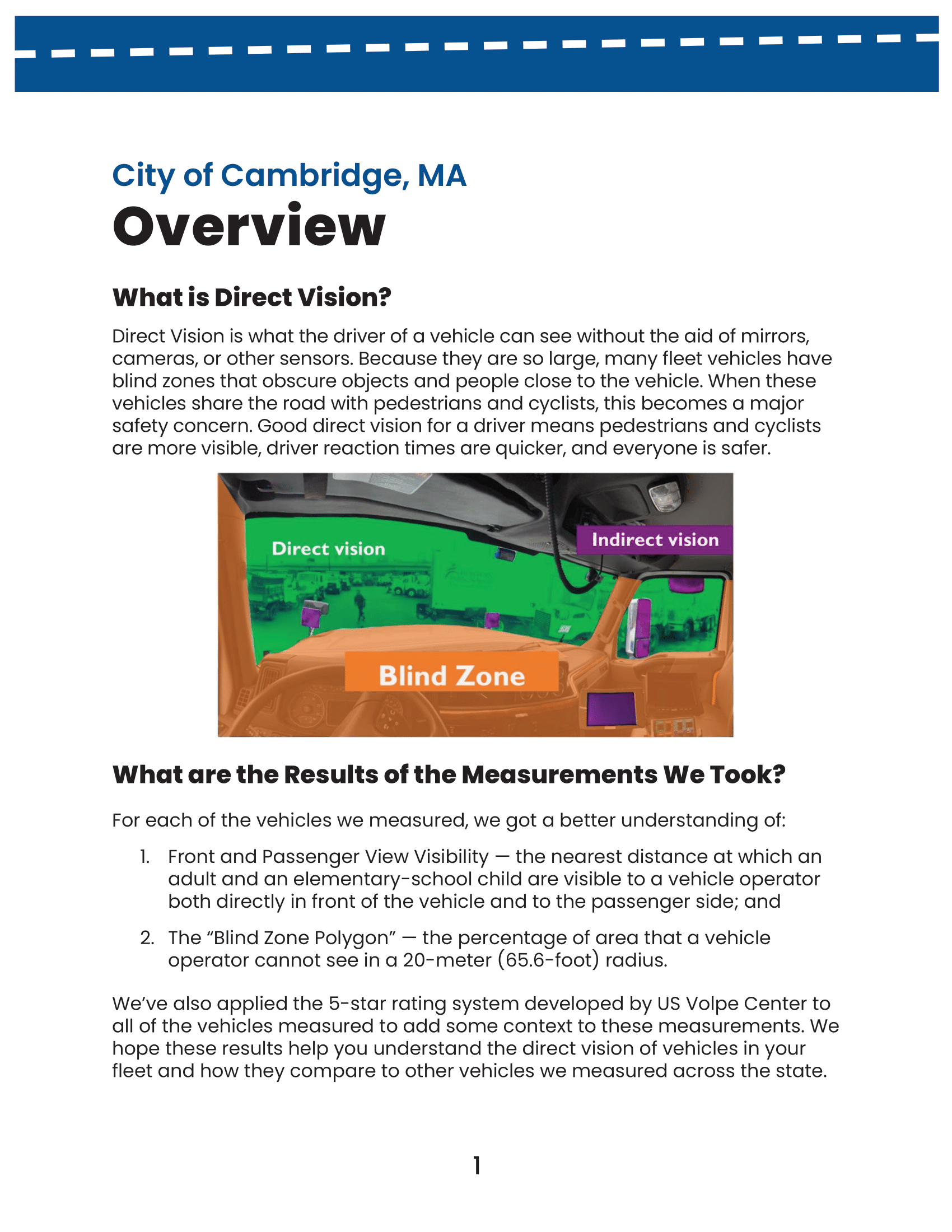
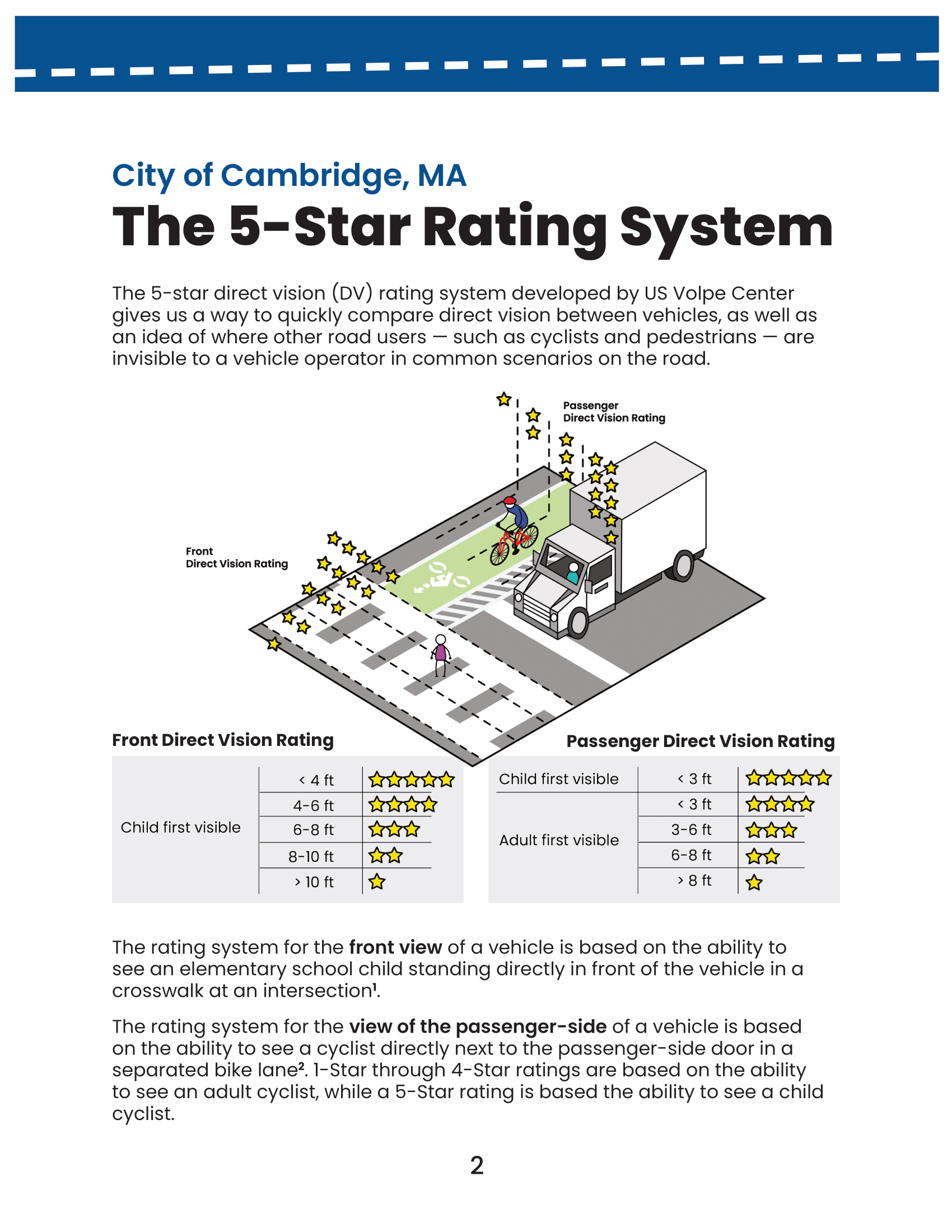
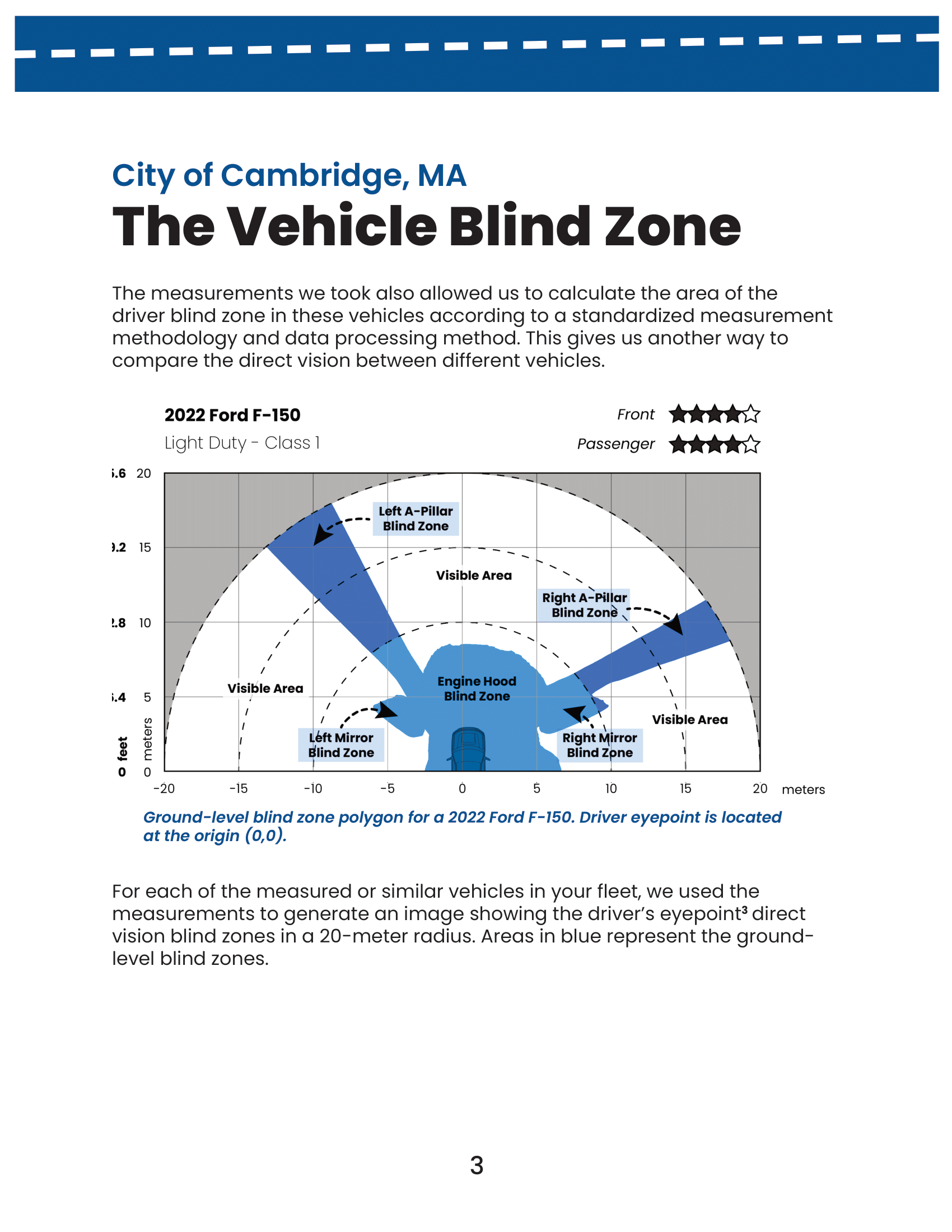

As a result of the measurements taken of the vehicles, blind zone polygons were generated by the team at The Lab and US DOT Volpe Center. These blind zone polygons represent the area on the ground visible and not visible from a driver’s eyepoint in a standard seating position. I worked on a couple visualizations aimed at making these polygons easier to interpret for a general audience, as well as two posters that display all of the polygons created by the study.
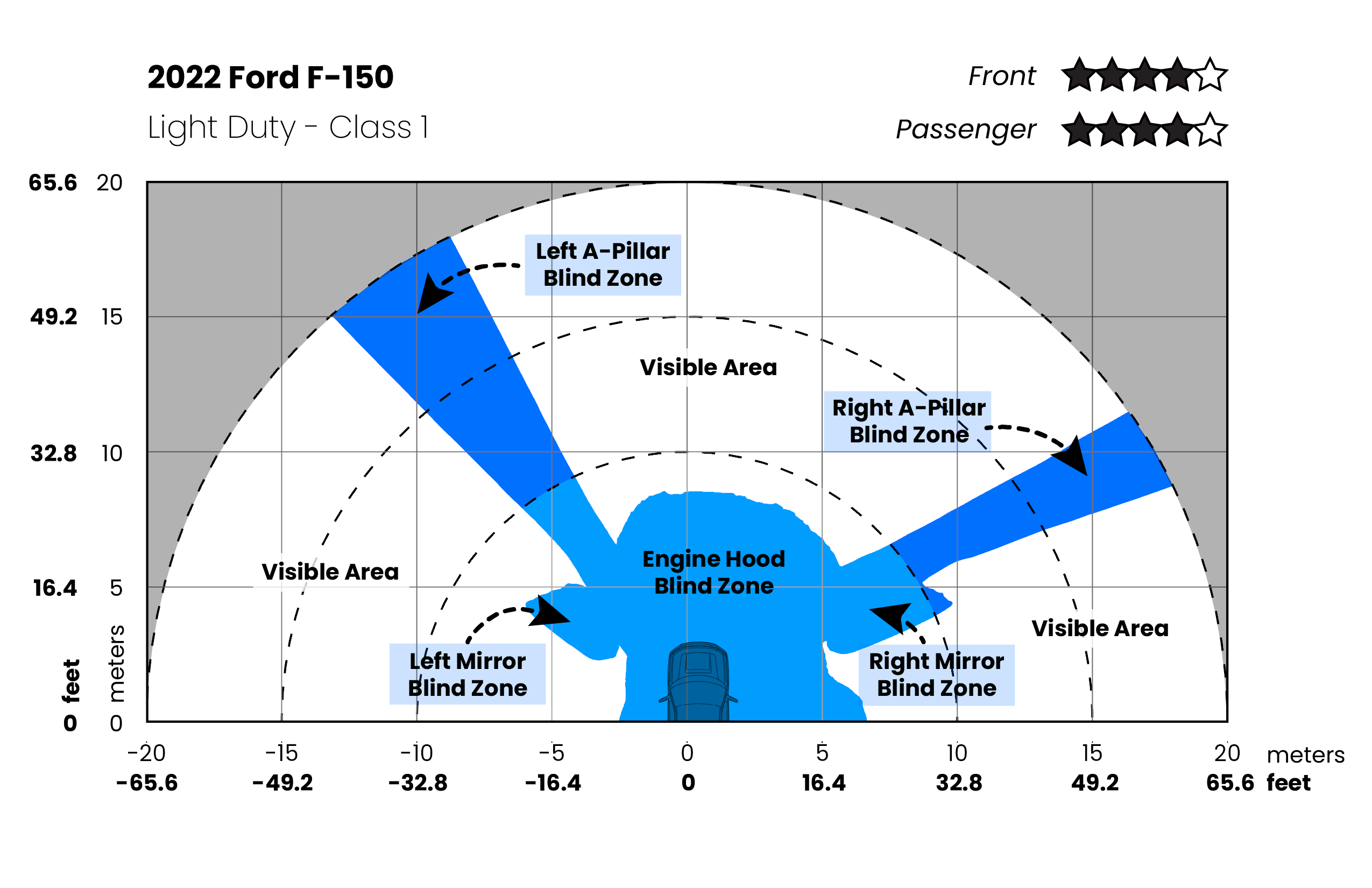
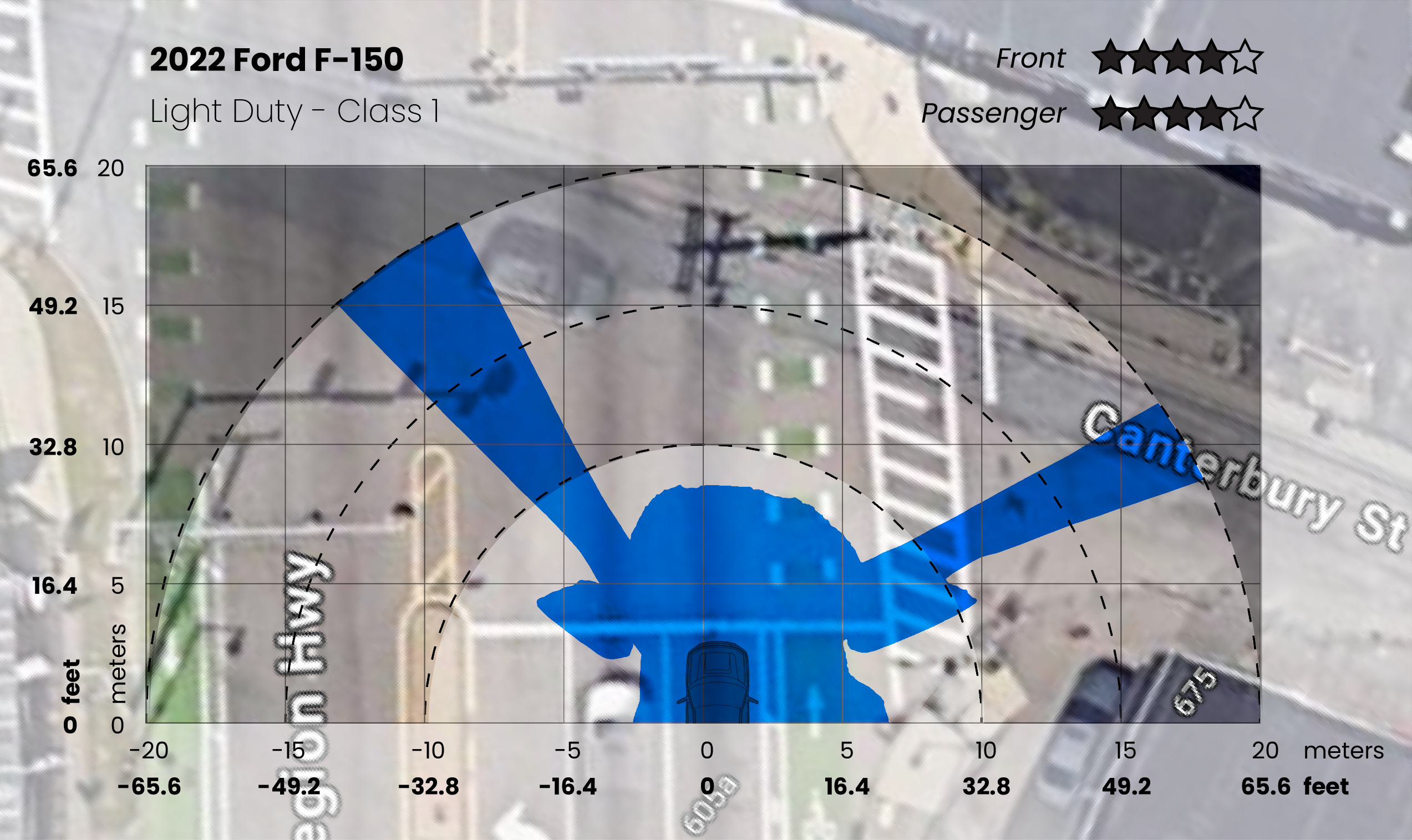
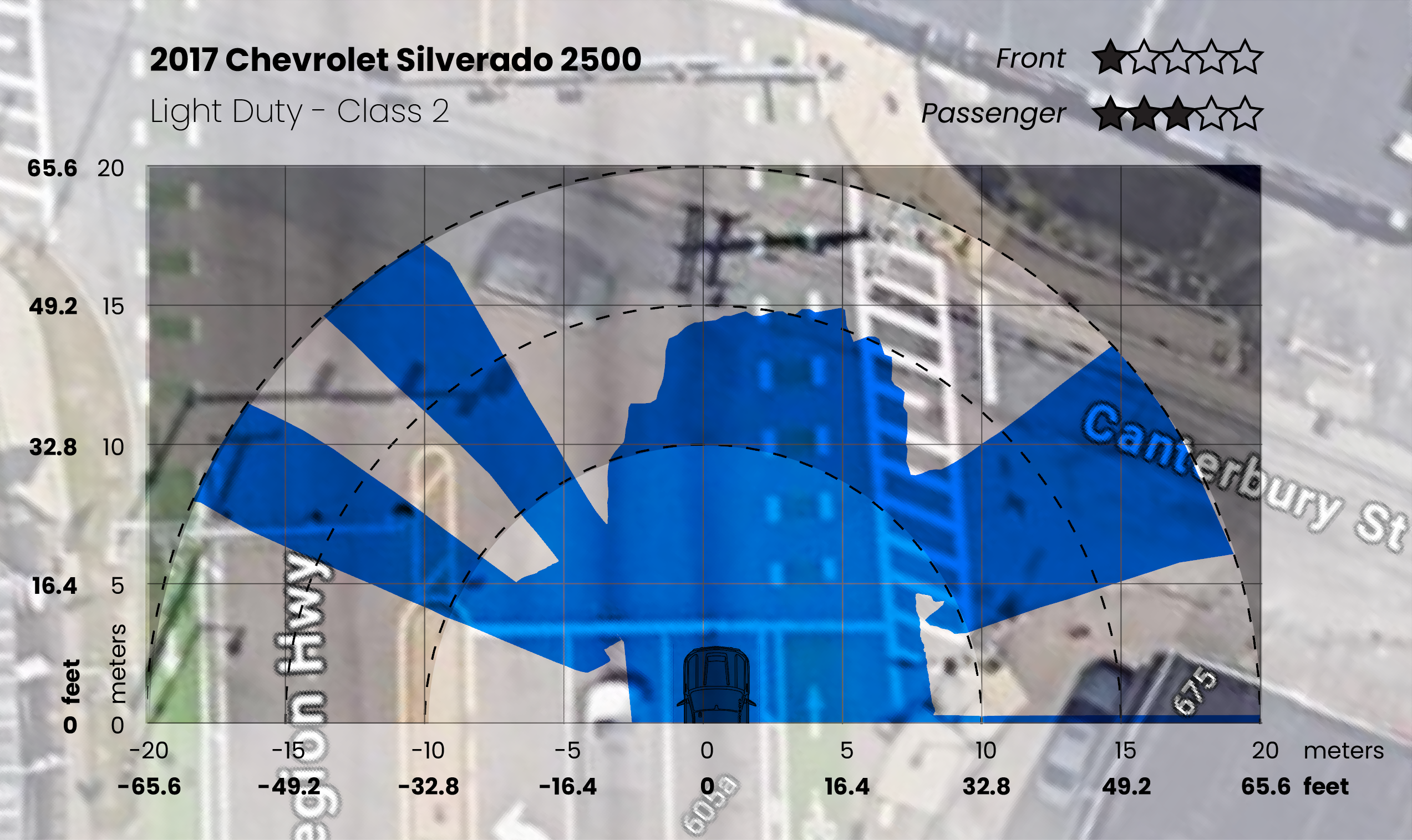
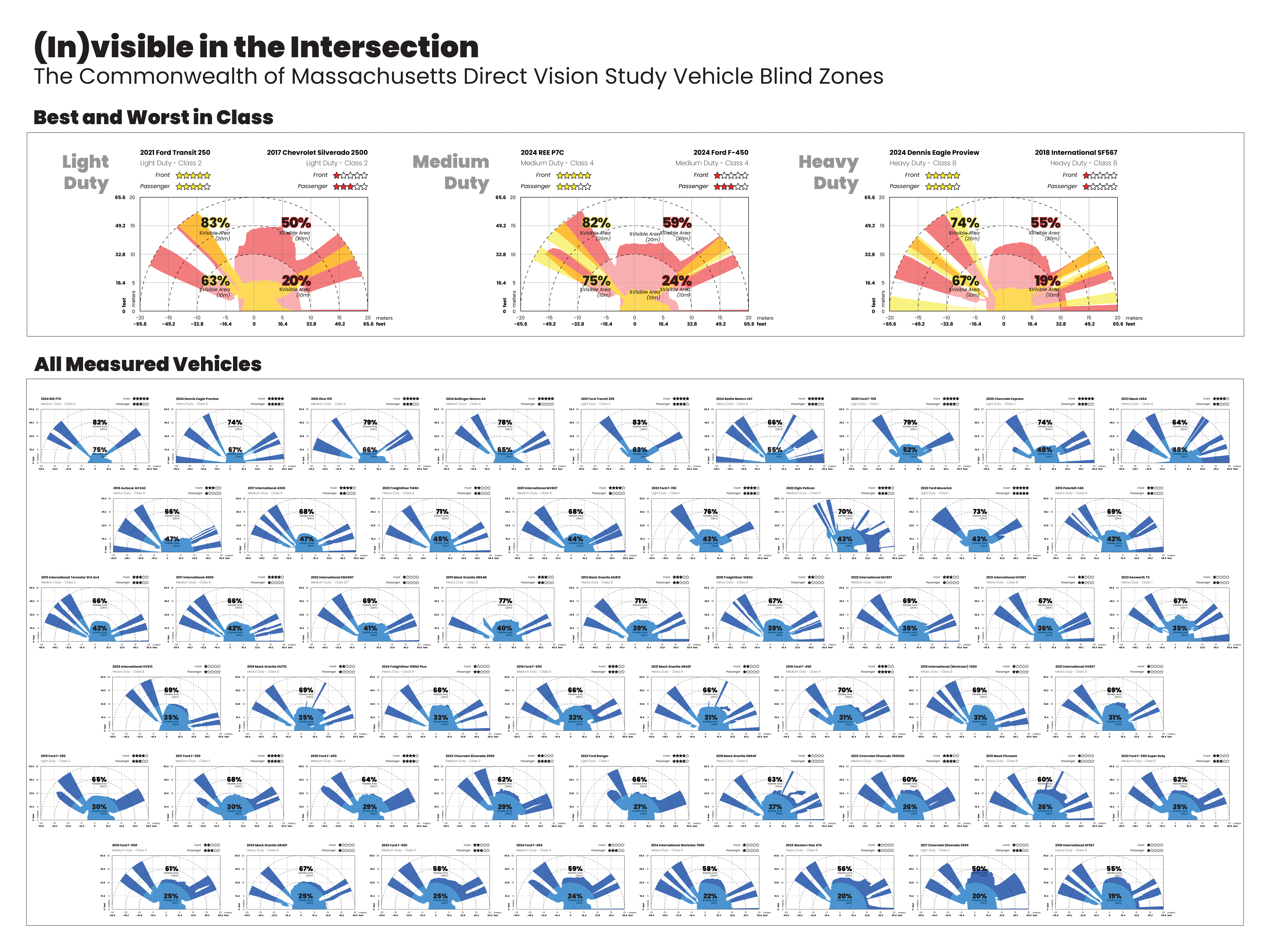
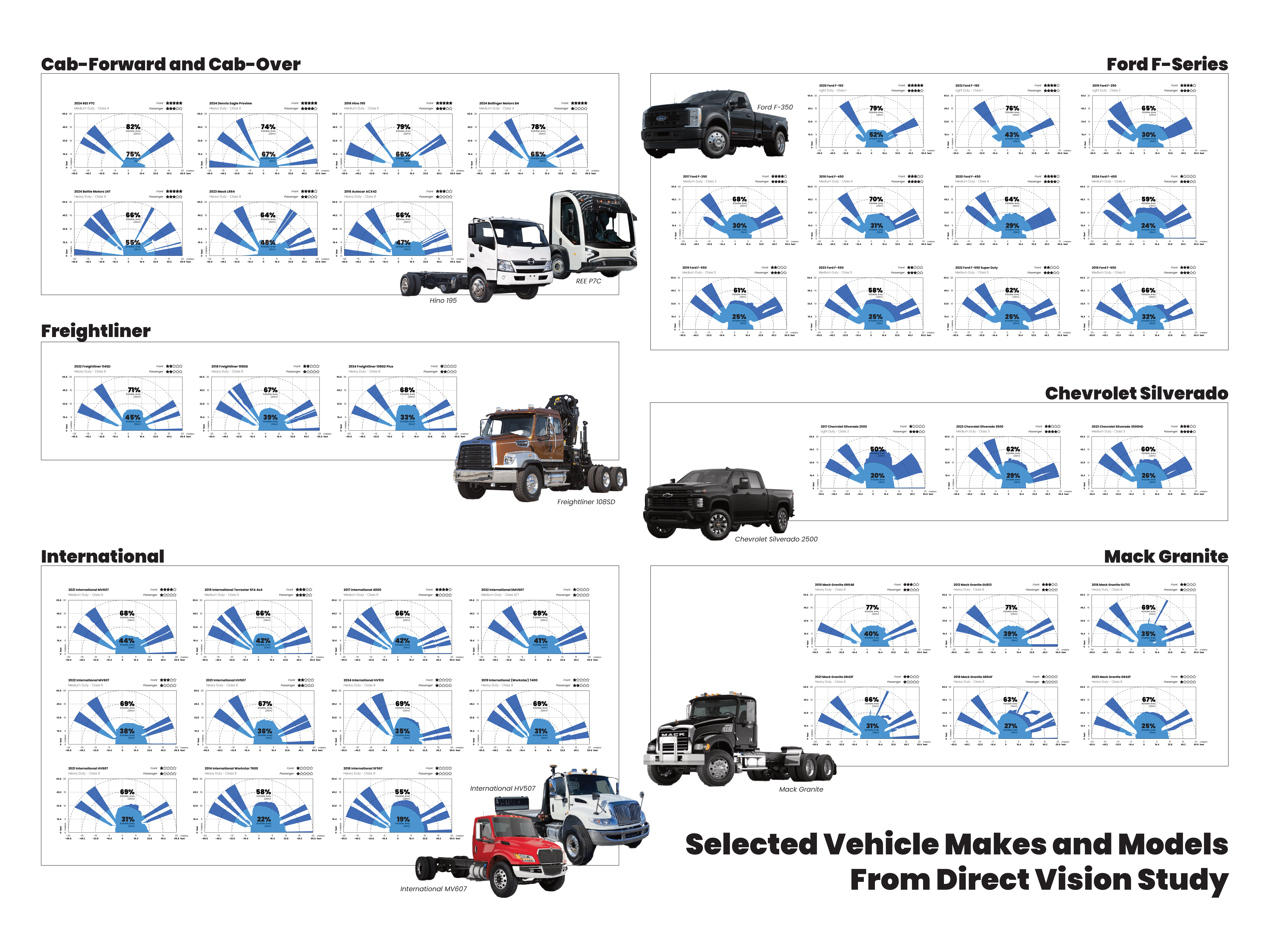
Additional information about the Direct Vision study can be found here.